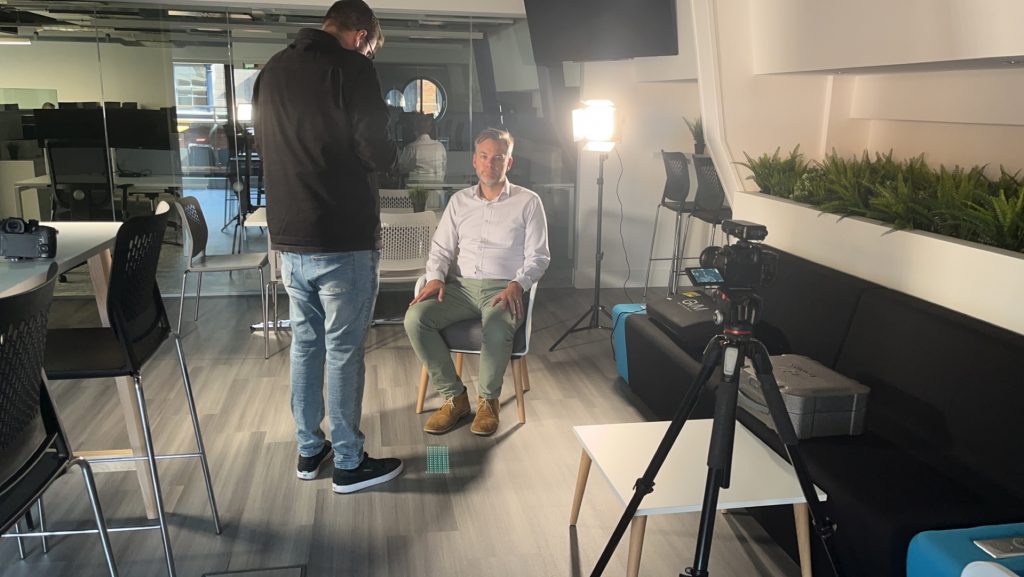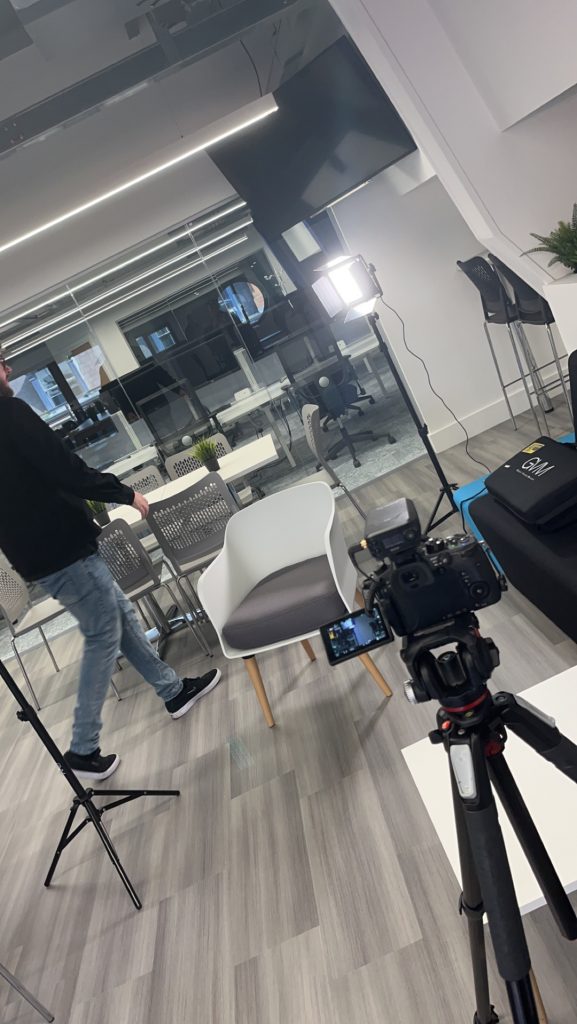My First Day In PR
Approaching the door of the office I was more scared and nervous than I ever had been before, here I was meeting Conor the Videographer for the PR company Lighthouse Communications. I had faced job interviews many times, events where I spoke to complete strangers, even first dates, and yet I couldn’t shake the nerves that had anchored themselves at the pit of my stomach. In my initial emails and phone calls, I had only corresponded with the managing director Stephen, which meant Conor was a complete mystery to me. My Mind began to race with negative thoughts and worries that hadn’t appeared before. What if he doesn’t like me? What if we don’t get on? Stopping to compose myself, I took a deep breath, fixed my father’s hand-me-down shirt and knocked on the door. Upon opening the door, Conor immediately exceeded all my expectations, he was just like me, energetic, fun, and loved his work. After 5 minutes the nerves washed away, as we chatted about the role and what I would be doing.
Reflecting on my first few days as a videographer, I will use Borton’s model to methodically examine my experience and performance of my first few days when editing, interviewing and exploring the world of a videographer. Jasper states that “Borton identifies three question stems” (Professional Development, Reflection and Decision-Making in Nursing and Healthcare, p.76)
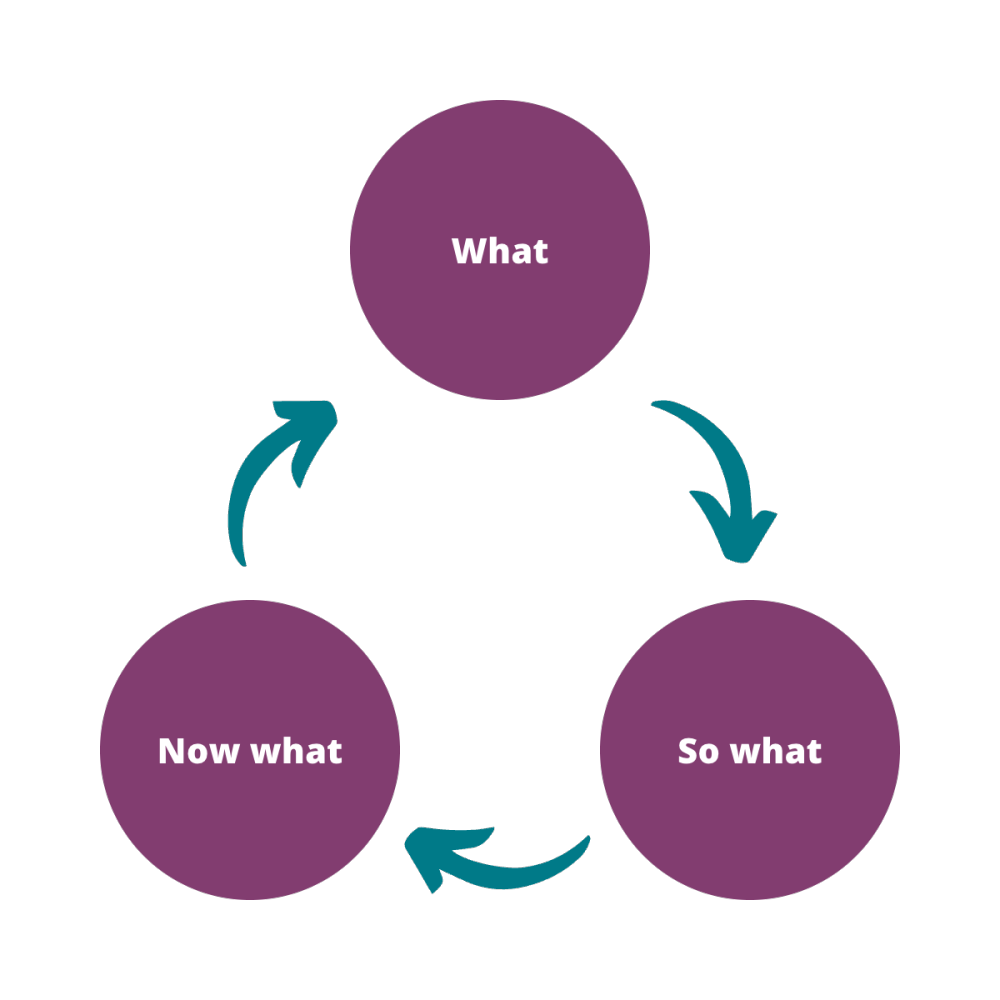
What
The “what” is the first part of Borton’s reflection model “This part of the reflection process describes what exactly happened in relation to an event, task or experience.” (Toolshero, accessed 15/11/2023) My given role was videographer, working alongside the current videographer Conor. My role as a videographer entailed creating and delivering quality design, video and photography content for clients across a range of industries. This media content would have to align with the client’s brand, marketing and communication goals. Immediately I began to feel pressure to deliver high-quality content to the clients and this pressure had a large impact throughout my placement.
My first day had begun and for my first task, Conor sent me footage that he had recorded a week prior to my starting at the company and asked me to edit the footage and put together the first draft of an Instagram reel for the Belfast City Airport. Editing is one of my strong suits, as I have lots of experience drafting videos throughout my own projects and during my time as a Broadcast student at university. Brimming with excitement and confidence I felt that this was my opportunity to make a good first impression and show off my editing skills. However, Conor would throw me a curveball that I was not expecting. My heart sank, burying all my excitement and newfound confidence under a cloud of anxiety and fear.
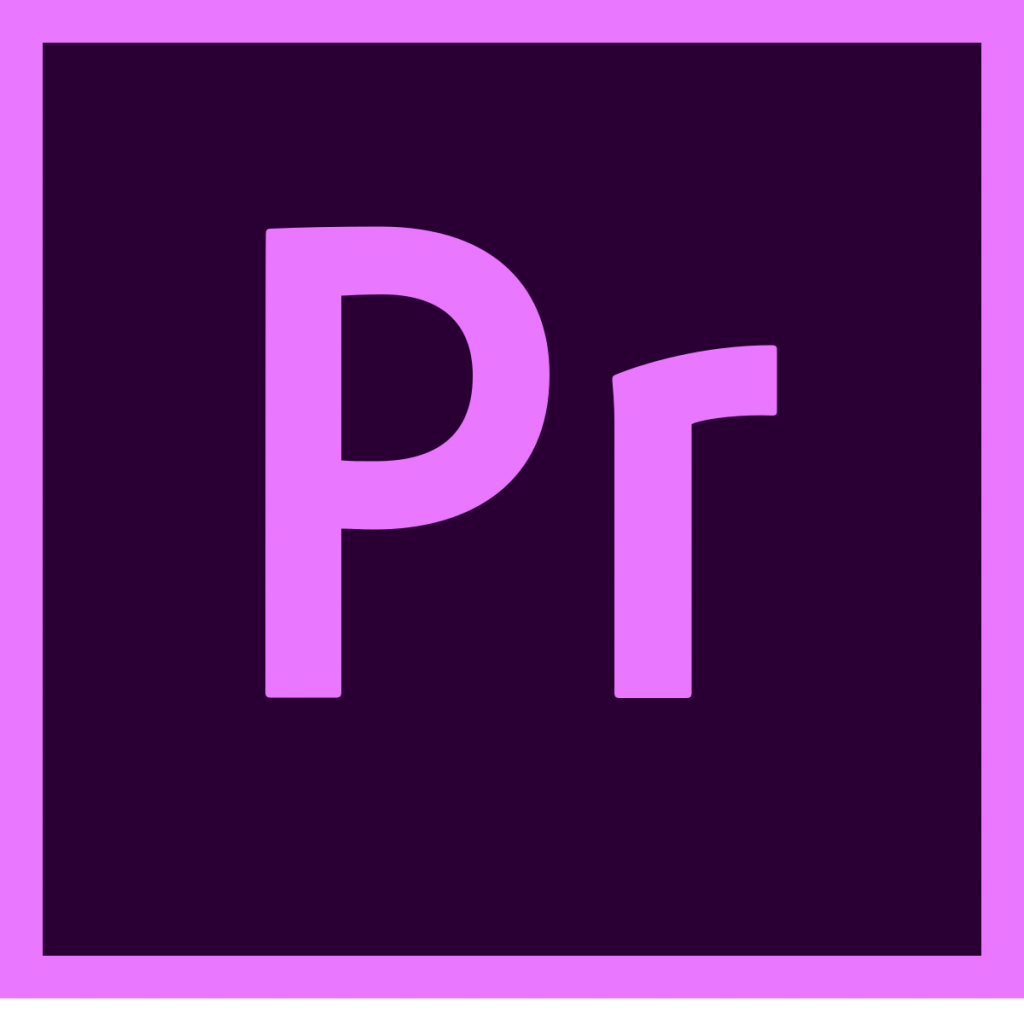
The curveball came in the form of the editing software, Premiere Pro. The Adobe editing software is one of the only software used by videographers that I wasn’t familiar with. I was angry with myself for not having asked previously what editing software Conor uses. This showed my poor research and planning before starting my placement, a mistake that I will never make again. Using my knowledge of other software, I employed the technique of trial and error, when editing and creating the first draft for the client, a stressful experience to say the least. A perfect example of Borton’s model as it “is based on the need of practitioners to operate in the real world of practice- need to identify, make sense of and respond to real life situations” (Jasper,Beginning Reflective Practice,p. 99-100)
By the time the draft edit was complete, it was time for me and Conor to embark on a journey to film for another client. Driving to Belfast I was able to talk to him more and he began to talk freely outside of the open space office. This was the beginning of our friendship and put me at ease ahead of the many hours that we would be working together.
Arriving at the location Conor asked me to unload the equipment and to set up the room for the interview. This included completing a sound check, setting up the lights and the camera equipment. I was familiar with this as during my learning in university we have been taught what light to use and what techniques to employ when setting up the audio and cameras. Conor was happy with my setup, so we shot the interview and uploaded the footage. A crazy, exhausting and stressful first day.
So What
The “So what?” enables me to analyse the events that occurred on my first day, focusing on where I went wrong and where I succeeded. I certainly felt the pressure on my first day, filled with ups and downs and a total emotional trainwreck. However, emotions and nerves aside, my preparation for starting my placement, is where I ultimately went wrong. The truth lay in the fact that I was just scared. I was scared to ask Conor what editing software he used in case he made assumptions about me prior to me beginning my placement.
“It is part of human nature to learn continually from experience, generally becoming more proficient and wiser in our responses to events as we grow older. Reflection is thus an important part of being an effective learner.”
Kathleen McMillan (p. 31)
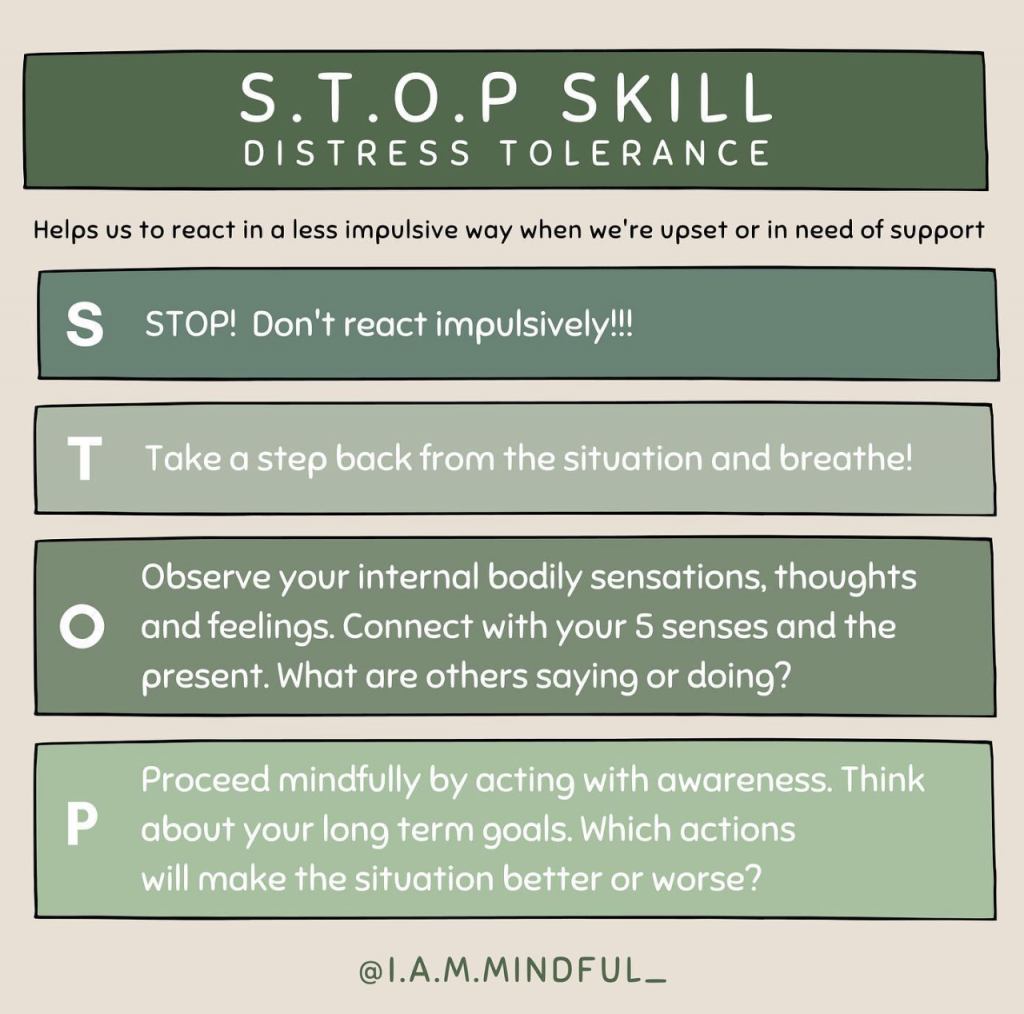
Learning from this mistake indeed, upon reflecting on my situation and my actions I realised that I had used a method taught in psychology known as the “S.T.O.P skill”(I am Mindful, Acessed 15/11/23). Without the use of the “S.T.O.P skill” I certainly would have spiralled into a panic not completing the task I was set or completing it poorly. It was only by using the “S.T.O.P skill” method that I realised that I could use my experience in other editing software to edit the footage, change the aspect ratio, trim clips and create structure. Through this, I was still able to employ the editing skills and techniques in which I was equipped to create a first draft that Conor was happy with, thank Goodness!
So, what could I have done differently? I should have researched what many videographers edited their videos with before starting my placement. I realised that the stress and anxiety that I was causing myself could have been avoided by simply asking a question. I assumed that the ideal and module employee for the company consisted of someone who arrived at the role and was amazing from the off. I now know that this is far from the truth as “most people learn from things as they happen”, showing that only through learning and implementing research we can improve in our desired fields. (Cunningham,p. 9)
However, on a more positive note, I was able to implement my learning and showcase my knowledge in the field on my first day, as I successfully and professionally set up the camera, audio and lighting for the interview. This provided me with a little confidence, that I so desperately needed, when applying the skills and knowledge that I did have experience in and using these skills to create content that fulfilled the expectations of the company’s clients.
Now What?
Now, what can I do to ensure that the pressure and stress I felt on my first day of placement does not happen again? Well, since then I have set aside a few hours each week to learn how to edit with Premiere Pro, having filmed some example footage and watched many Youtube videos, to ensure that I am confident and competent to complete any task or implement any technique that Conor may ask of me. My poor planning and research possibly held Conor back on my first day as the videography business is very fast-paced with many deadlines and lots of videos to produce. This is something that I have learned as my placement progresses. However, I am noticing that due to my practice and time spent outside of my hours in the office, I am becoming quicker and more confident as I progress. This is certainly something that I will continue to do, taking precautions not to burn myself out of course, as I move forward into the media world that I am so fascinated by.
References:
Janse, B. (2022). Borton’s Model of Reflection. Accessed 15/11/23 from Toolshero: https://www.toolshero.com/personal-development/borton-model-of-reflection/
Jasper, Melanie, et al. Professional Development, Reflection and Decision-Making in Nursing and Healthcare, John Wiley & Sons, Incorporated, 2013.
Jasper, Melanie. Beginning Reflective Practice. 2nd ed., Cengage Learning, 2013.
McMillan, Kathleen, and Jonathan D. B. Weyers. How to Improve Your Critical Thinking & Reflective Skills. Pearson, 2013.
“S.T.O.P Skill” I am Mindful, Acessed15/11/23, https://www.iammindfulco.com.au/the-iam-blog/stop-skill
Cunningham, Ian, et al. The Handbook of Work Based Learning. Gower, 2004.


